For true lovers of film, no movie-watching experience can compare to the thrill of the cinema. The smell of the popcorn, the atmospheric lighting, the feeling of sinking into your seat as you are swept away by a great film – all iconic hallmarks of movie theatres around the world, which are generally much the same. After all, you’re here to look at what’s on the screen, not in the cinema itself.
Truly amazing cinematic venues, however, do exist – and they are destinations unto themselves. Journey with us across six continents to find the picture palaces you’ll never forget.
The Odeon Luxe Leicester Square in London, England
When talking about the most historic cinema in the UK capital, it would be easier to name the Hollywood stars and global dignitaries who haven’t graced its famous stage over the years. From kings and queens to sporting legends and just about every A-lister in Tinsel Town, the red carpet at The Odeon Luxe Leicester Square has many a story to tell. History buffs may be interested to know that when they step into the cinema’s art deco foyer (renovated in 2018), they are standing on the very spot where Marilyn Monroe attended the premiere of Battle of The River Plate in 1956. What’s more, the gorgeous cinema offers outstanding views of Leicester Square from its balcony, and the view in the main auditorium is equally breathtaking.
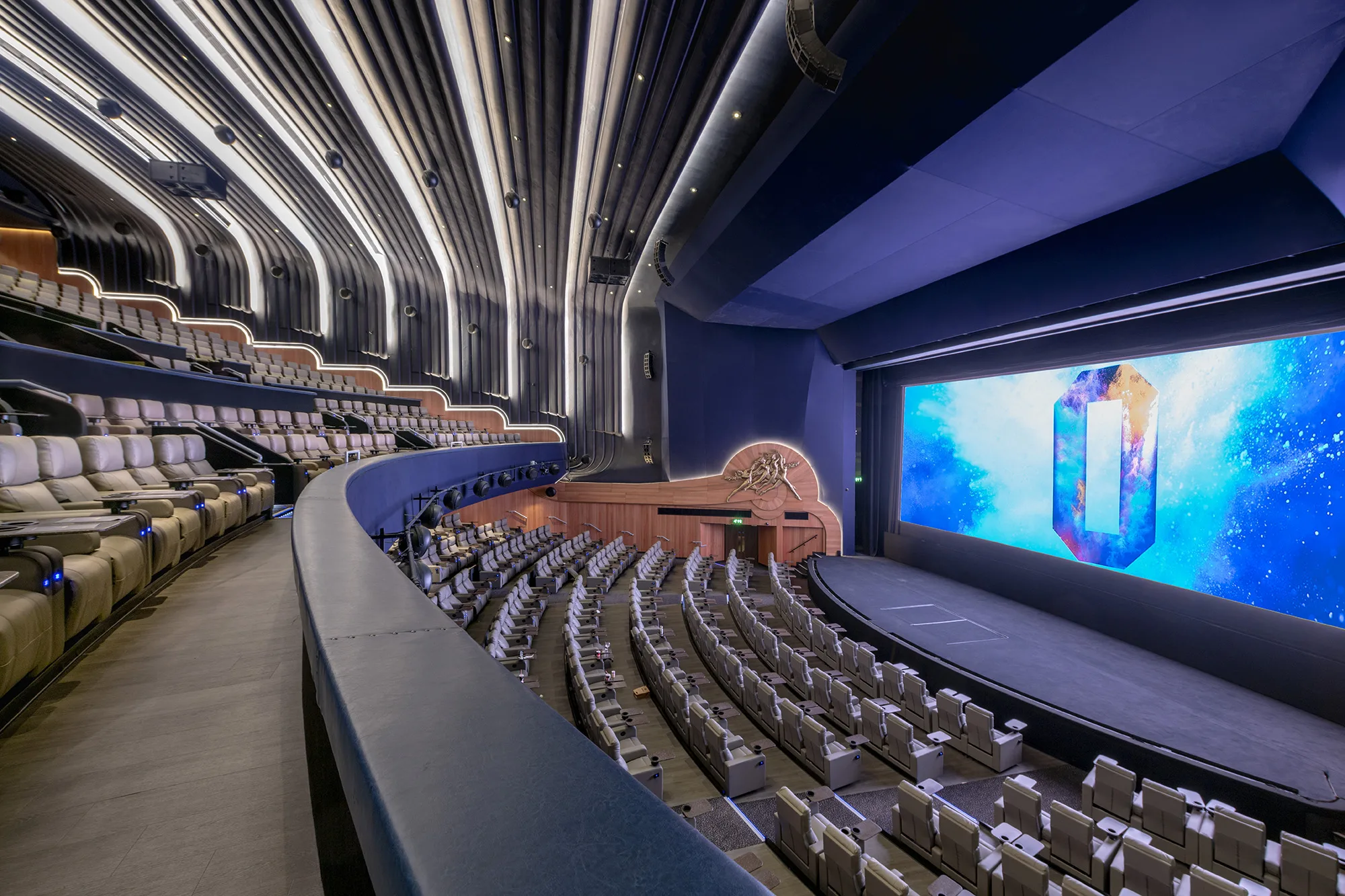
[Photo courtesy of The Odeon Luxe Leicester Square]
Boat Cinema in Los Angeles, USA
You’ve watched films on land at the movie theatre, and in the air aboard a long-haul flight, but how about on water? Open only during the summer, Boat Cinema is a unique experience where visitors can come to Castaic Lake (about 30 minutes from Downtown LA) and hire a boat for up to five people, or simply book a spot on the beach itself. Generally showing classic movies (including a delightfully apt screening of Jaws!), it’s a fun way to engage with film in a wonderfully novel setting.
View this post on Instagram
View this post on Instagram
Le Grand Rex in Paris, France
In a city filled with iconic beauty, Le Grand Rex is particularly eye-catching. Modelled after New York’s Radio City Music Hall, the neon sign on the corner tower makes you feel like you’re entering a scene from The Great Gatsby. Inside, the main cinema hall is just as impressive, featuring an imposing archway over the screen, as well as artful balconies and beautiful interior facades along the walls. Le Grand Rex also boasts an additional screen, called Le Grand Large – one of the biggest in Europe – while other screening rooms are themed after films like The Matrix and Tron.
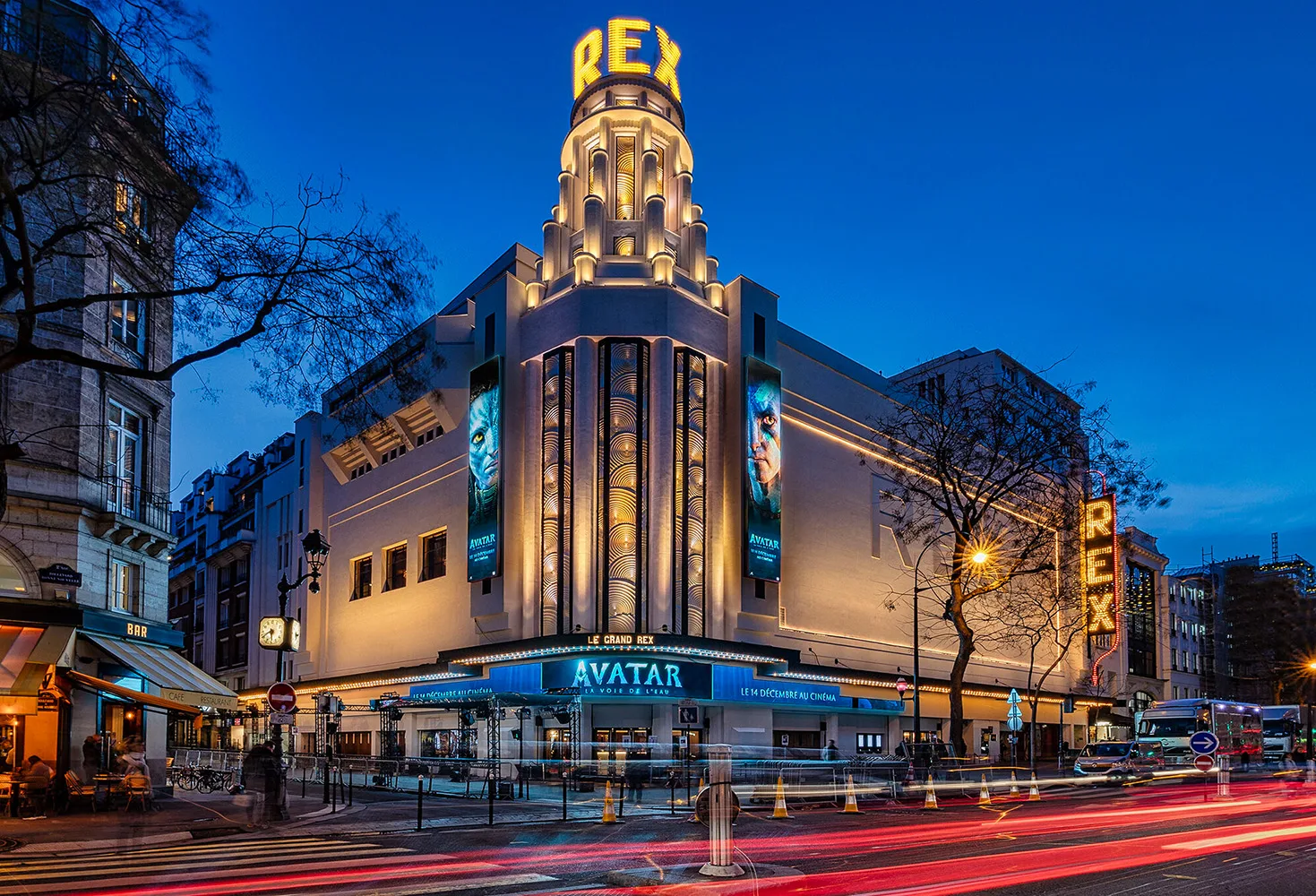
[Photo courtesy of Le Grand Rex]
Koninklijk Theater Tuschinski in Amsterdam, Netherlands
Koninklijk Theater Tuschinski might just be the most beautiful place to watch movies in the world. Originally built in 1921 by Abraham Tuschinski, a Dutch businessman of Jewish Polish descent who would be killed during the 1942 Nazi occupation of the Netherlands, the theatre was restored to its original Art Deco design in 1998, as a tribute to the man who created it. If the head-turning exterior isn’t enough to catch your eye, the Tuschinski’s main screen is a magnificent sight, featuring international aesthetic influences and multiple levels. The foyer was designed to make moviegoers feel as if they are stepping into an illusion – and over a century on, the cinema will still feel like a dream for movie fans.
The Park Theatre in Clear Lake, Manitoba, Canada
Located in a log cabin against the wild backdrop of Canada’s Riding Mountain National Park, The Park Theatre adds a cinematic element to the great outdoors. Showing current films on digital projectors, the rustic surroundings give the experience a homely feel – along with the fact that the theatre is a family-run business, where relatives young and old pitch in to welcome customers. 86 years on from its opening, the location is a truly beautiful way to experience cinema.
View this post on Instagram
View this post on Instagram
Cineteca Nacional in Mexico City, Mexico
A cultural institution in the Mexican capital, Cineteca Nacional arose from the ashes of a tragic fire in the early 1980s to become a spectacular temple of cinema. The government-funded institution boasts an archive of over 15,000 films, as well as 10 auditoriums and the facilities to carry out its mission of preserving Mexico’s cinematic heritage. With the glorious perforated roof making it an instantly recognisable city landmark, the Cineteca is a must-visit regardless of your particular interest level in film. However, its vast programme of movies – from arthouse to the latest blockbusters – make it a draw for cinephiles who could happily spend a few hours here, if not days!
View this post on Instagram
View this post on Instagram
Cine-Theatro Central in Juiz de Fora, Brazil
Owned and maintained by the University of Juiz de Fora, a city in southeastern Brazil, Cine-Theatro Central may be a bit out of the way for most travellers, but it boasts a lavish history that’s reflected on its walls. Opened in 1929, the cinema reflects a time when going to the movies was a grand event to rival live theatre and opera (both of which have also been staged here). The exterior is impressive, with its Art-Deco-inspired architecture, and inside things only get more glamorous: the U-shaped balcony lends a sense of grandeur to any screening, although the frescos on the ceiling may distract you from the action! A notable landmark in more ways than one.
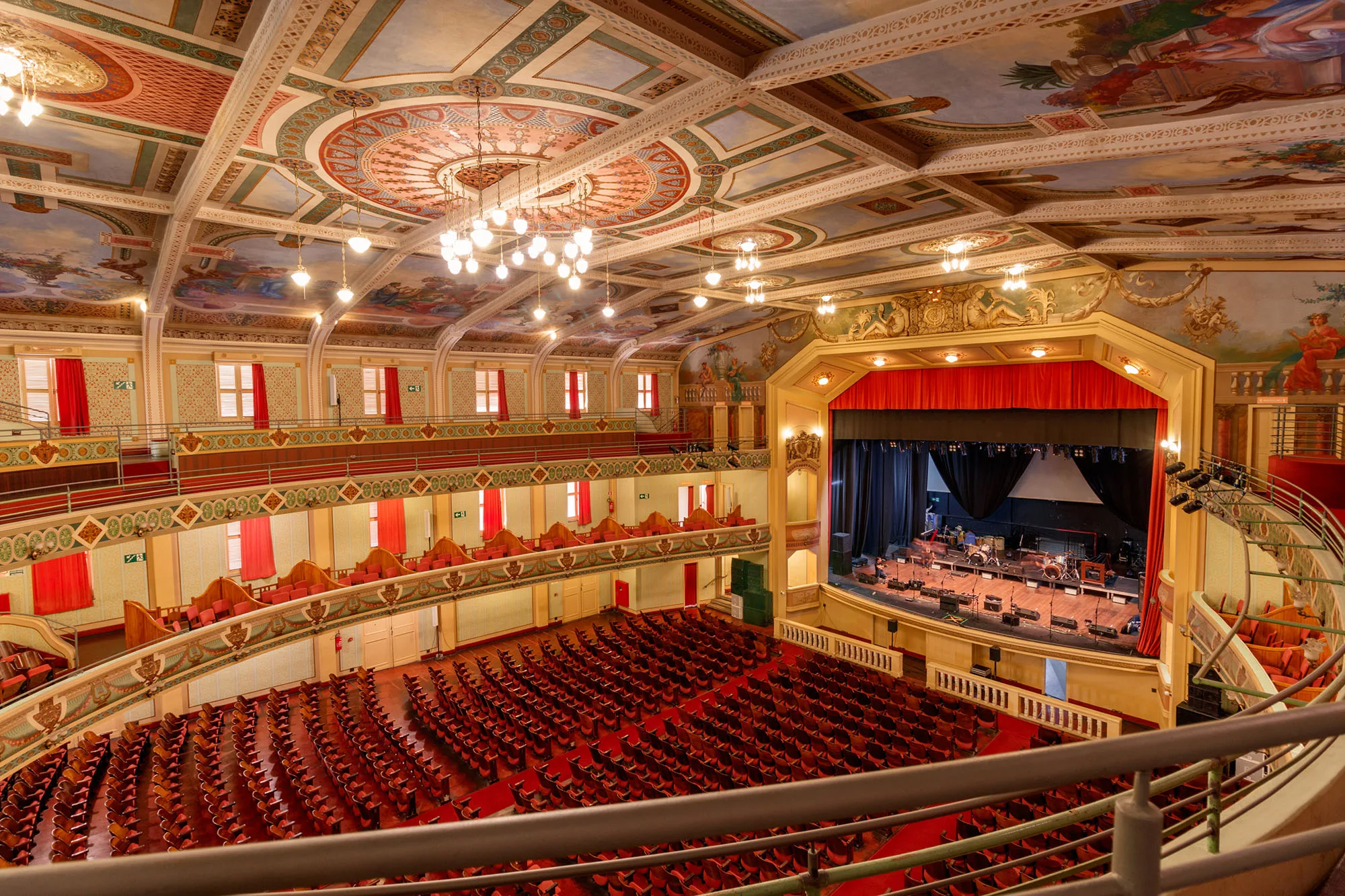
[Cine-Theatro Central. Photo by Rodrigo.Argenton/Wikimedia Commons]
Pula Arena in Pula, Croatia
How often do you get the chance to watch a film in a genuine Roman amphitheatre? Built between 27 BC and AD 68, Pula Arena is one of the best-preserved Roman amphitheatre remaining in the world, and in modern times is used for live theatre, concerts and, yes, movies! Every summer, the arena hosts The Pula Film Festival (complete an awards ceremony called The Golden Arenas), and in 2023 appropriately held a screening of the 2001 Roman epic Gladiator. Many great cinemas have equally great traditions, but the towering walls of the Pula arena serve as a reminder that you are literally stepping into history!
View this post on Instagram
View this post on Instagram
Alamo Drafthouse Cinema Village in Austin, Texas, USA
The Alamo Drafthouse pioneered many modern aspects of cinemagoing, particularly in the US. While not the first movie theatre to serve restaurant-quality food and alcohol in luxury settings, they were one of the first to streamline the experience for chain cinemas, creating a formula that has been mimicked the world over. For us, visiting the oldest operating location, Cinema Village on Austin’s West Anderson Lane, is a must-do for viewers who like their movie experiences to be truly unique. Relax in the brightly decorated Village bar, before enjoying the bustling screening room where you can have everything from pizzas to popcorn delivered to your seat. A true slice of Americana in modern cinema!
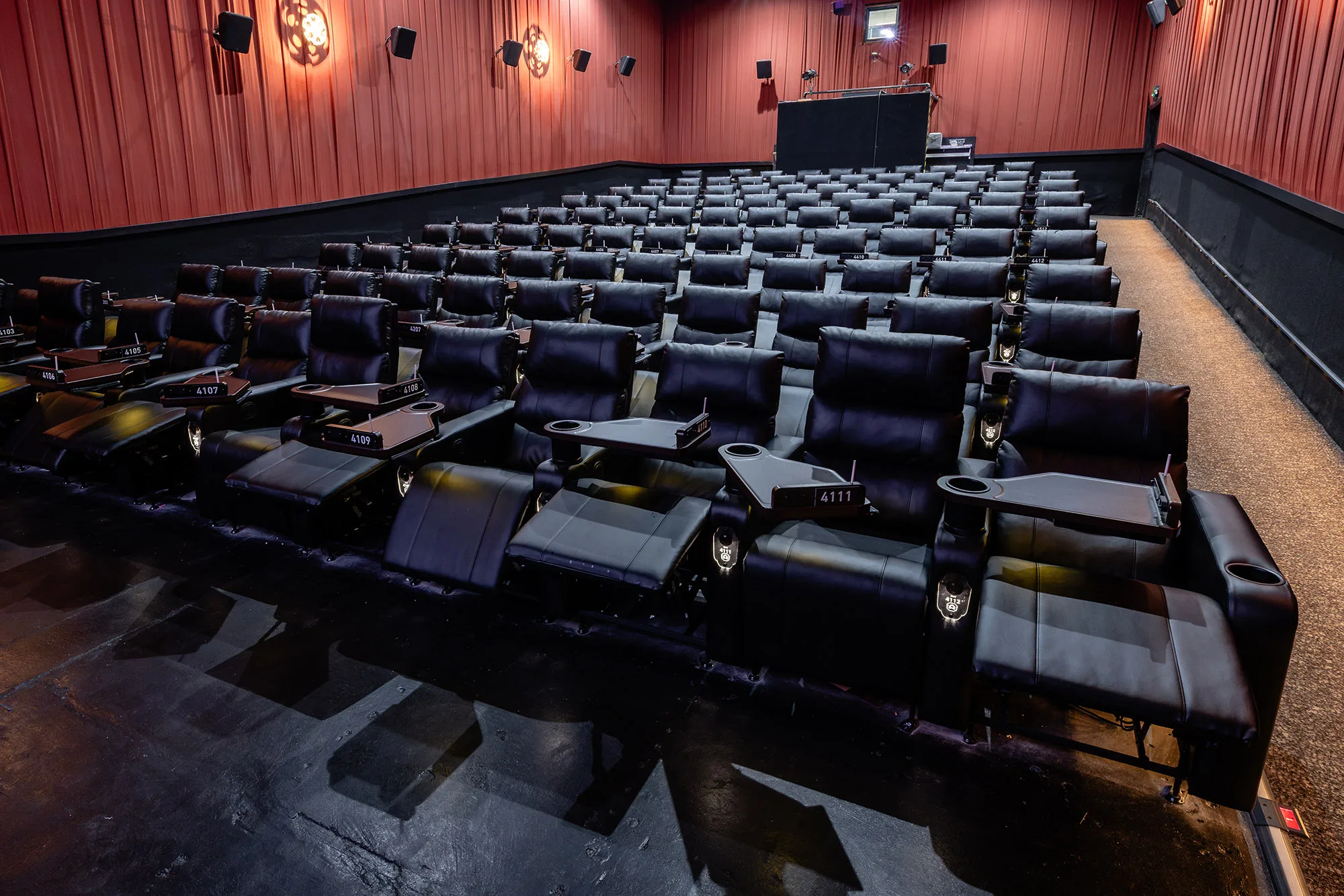
[Alamo Drafthouse Cinema Village. Photo by Heather Kennedy]
The Astor Theatre in Melbourne, Australia
Over the years, this Australian landmark has launched a number of public campaigns to save it from redevelopment, and it’s easy to see why. With 1,600 seats in the huge main auditorium, which boasts a regal jazz moderne aesthetic that has remained unchanged since its opening in 1936, you feel very much like you’re stepping into a bygone era of cinemagoing. Newcomers would be smart to check out The Astor’s famous double bills, as well as quirky screenings like the annual celebration of the Talking Heads concert film Stop Making Sense.
The Civic in Auckland, New Zealand
Many outdoor cinemas present ‘movies under the stars’, but this New Zealand marvel offers the same experience indoors! Built in 1929, The Civic was restored to its original style in the late 1990s, inviting visitors a look at its numerous aesthetic influences. The foyer takes cues from Eastern cultures, underlined by its famous Buddha statues, while inside the auditorium, a beautifully painted ceiling lights up to give the impression of a twinkling night sky. Movie buffs will also be enthralled to know that legendary New Zealand director Peter Jackson used the interior for his 2005 remake of King Kong. While the venue now primarily hosts live events, visitors can catch movie showings during the New Zealand International Film Festival every August, as well as occasional film premieres throughout the year.
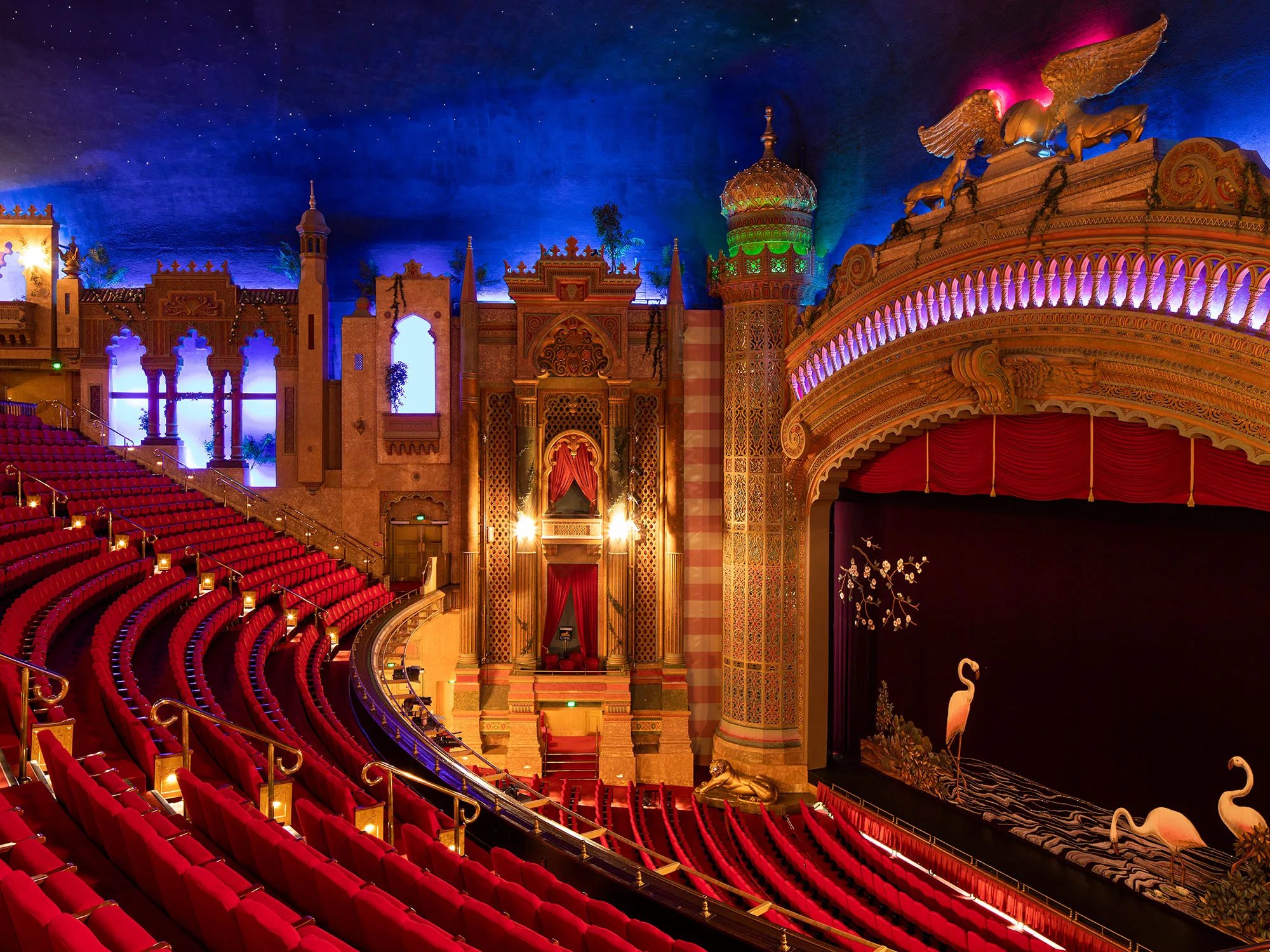
[The Civic, Auckland, New Zealand, Auckland Live. Photo by David Straight]
Toho Cinema in Shinjuku, Tokyo, Japan
Toho Cinemas are a popular chain in Japan, but one venue in particular speaks to the very heart of the country’s film industry. The chain is owned, of course, by Toho, the company best known for bringing Godzilla to the world – and at its Shinjuku outpost, the Toho Cinema features a giant Godzilla statue peering over the top of the building, even emitting smoke and sound effects on occasion. It’s an incredible tribute to the beloved character, as well as a way to combine cutting-edge multiplex viewing with a quirky bit of film history.

[Toho Cinema. Photo by Manish Prabhune/Wikimedia Commons]
Cinema Dei Piccoli in Rome, Italy
You’ll be hard-pressed to find a more intimate viewing experience (outside of your own living room) than the charming Cinema dei Piccoli in Rome’s historical centre. Officially holding the record as the world’s smallest cinema, it offers just 63 seats within a tiny building that looks almost like a house from a fairy tale. That aesthetic isn’t an accident, as the cinema was built in 1934 amid the rise of Disney animations, designed to offer a diminutive but exciting experience for children. Nowadays, animation fans young and old will delight in the lovingly maintained cinema, which still prioritises family films and animation, along with learning programmes for local schools.
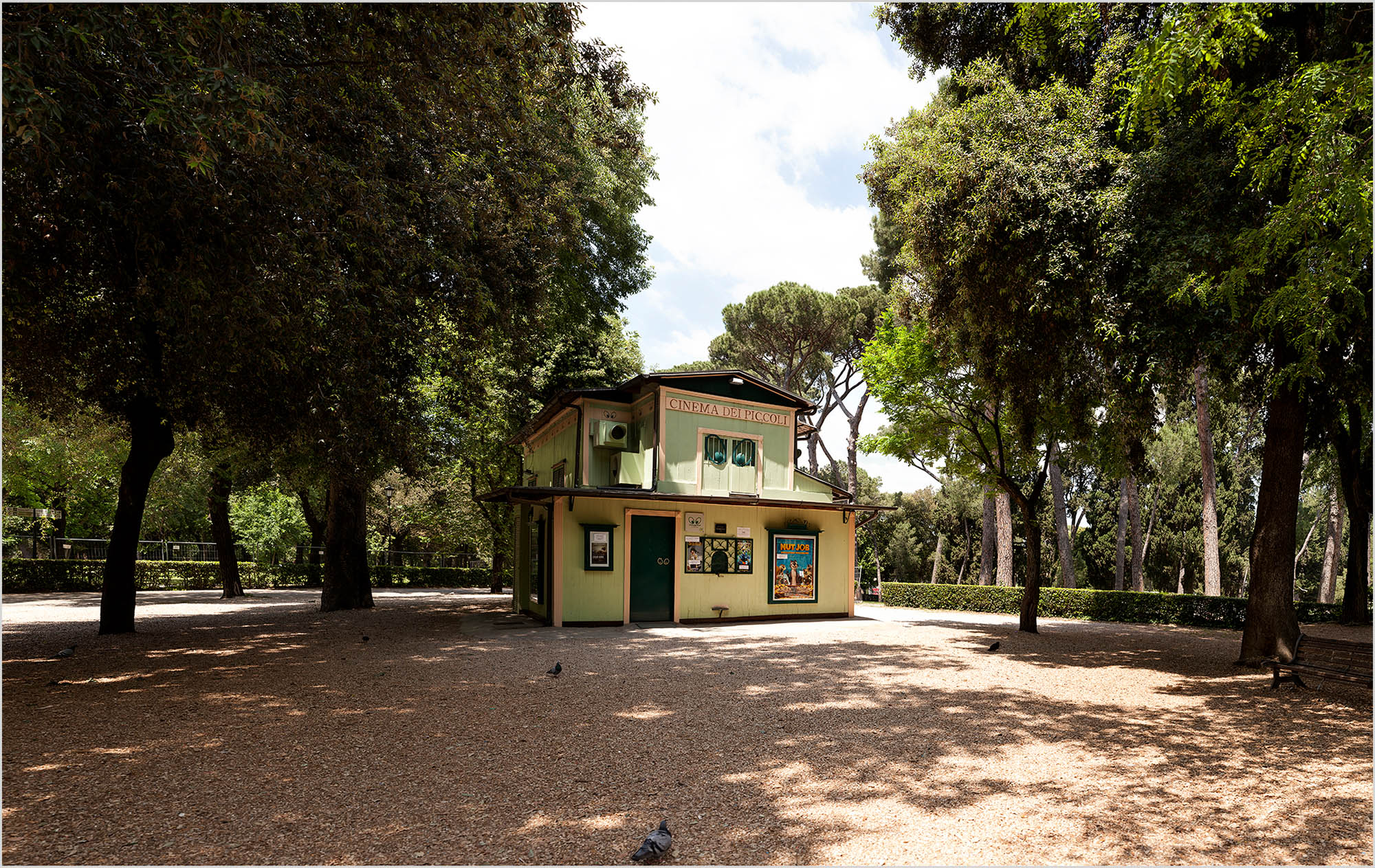
[Photo courtesy of Cinema Dei Piccoli]
The Labia Theatre in Cape Town, South Africa
With its leafy terrace, Old-World décor and striking light-blue entrance, this cinema is currently on its third life: originally an Italian embassy ballroom, it was opened by Princess Labia as a theatre for live performances in 1949, and now it’s the largest arthouse cinema in South Africa. The Labia Theatre is both an architectural wonder and a community hub, having leaned on crowdfunding to finance updates to the digital projection system, while still maintaining the traditional décor. The cinema also inspired an acting legend, with Oscar nominee Richard E. Grant (Star Wars, Loki) becoming a regular visitor during his time as a student in the country.
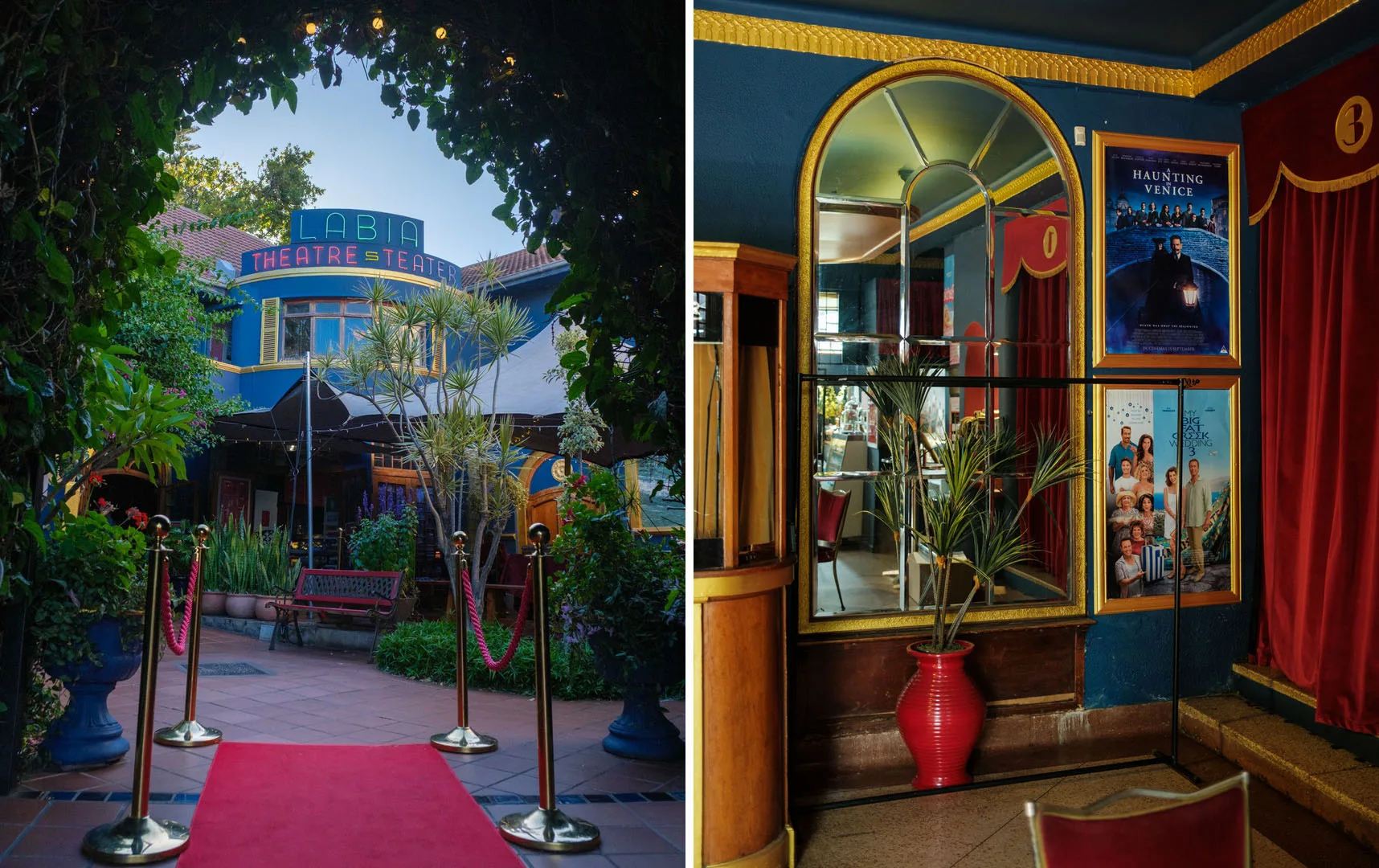
[Photo courtesy of The Labia Theatrea]

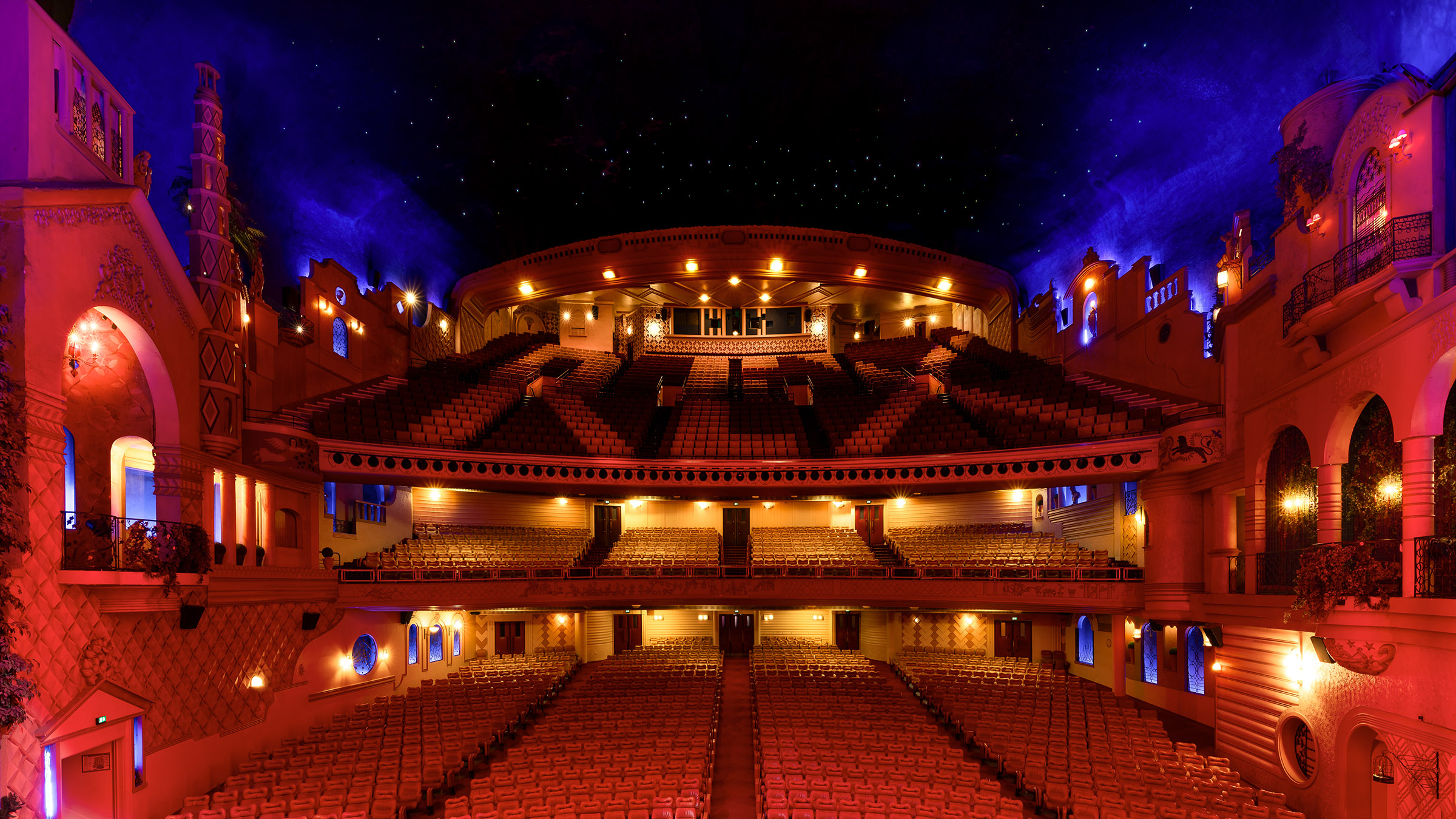











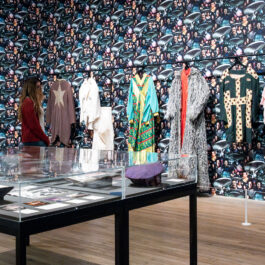
Sorry, the comment form is closed at this time.